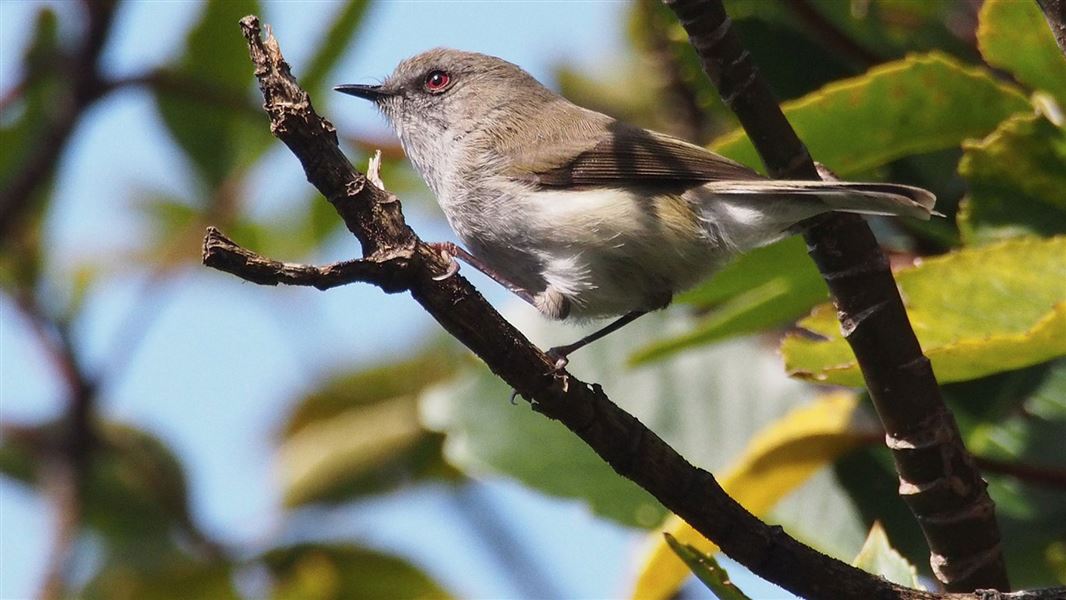New Zealand status: Endemic
Conservation status: Not Threatened
Found in: Throughout New Zealand
Species information: Grey warbler/riroriro on NZ Birds Online
Sound recording:
Grey warbler song (MP3, 527K)
01:26 – Territorial call, flying between perches, answering a tape recorder.
Our bird songs can be reused, even commercially, according to our copyright terms.
Emergency hotline
Call 0800 DOC HOT (0800 362 468) immediately if you see anyone catching, harming or killing native wildlife.
These diminutive insectivorous birds busy themselves along branches seeking out small invertebrates.
Grey warbler (Gerygone igata) was the surprise recipient of the title of New Zealand's best-loved bird in 2007.
Facts
The grey warbler/riroriro are found throughout New Zealand.
They are a small grey-brown bird with pale grey on the face throat and breast and an off white belly and under tail.
Weighing about 6.5g, which is around one-third the weight of a mouse, makes them one of New Zealand's lightest birds.
They are insectivores with a habit of hovering to pick insects and spiders from plants.
Grey warblers are clever nest builders. They have distinctive domed hanging nests with a small side entrance hole.
They are one of few native passerines to have benefitted from human modification of the landscape.
Threats
Grey warblers are abundant and widespread and no threat to their long term existence is apparent.
Our work
Grey warbler/riroriro are not threatened, so DOC doesn't actively work with them.
Of course, the work that DOC does in plant and animal pest control increases the quality of whole ecosystems, and therefore contributes to the ongoing success of many common birds like the grey warbler, as well as ensuring the ongoing survival of our rarer more susceptible species.
DOC prioritises its work to protect the rarer species, in the context of their overall environment. This is encapsulated in the whakatauki (Maori Proverb):
"Tiakina nga manu, ka ora te ngahere Ka ora te ngahere, ka ora nga manu"
"Look after the birds and the forest flourishes. If the forest flourishes, the birds flourish."
You can help
Grey warblers are quite common, although they are relatively shy and are heard more than seen. They will quite likely visit your garden if you plant native shrubs for them to safely build their nests in.
